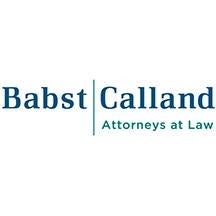On April 17, 2024, the U.S. Environmental Protection Agency (EPA) released a pre-publication version of its long-anticipated final rule designating perfluorooctanoic acid (PFOA) and perfluorooctanesulfonic acid (PFOS), and their salts and structural isomers, as “hazardous substances” under the Comprehensive Environmental Response, Compensation, and Liability Act (CERCLA). The final rule will be effective 60 days after publication in the Federal Register. PFOA and PFOS are the two most prominent and studied compounds in a “family” of per- and polyfluoroalkyl substances (PFAS) consisting of thousands of manmade chemicals. PFAS have been widely used for decades in various applications, including manufacturing water-, stain-, and heat-resistant consumer products, e.g., waterproof clothing and food packaging, and as ingredients in aqueous film forming foams (AFFF) used to extinguish certain kinds of chemical fires. Research indicates that exposure to PFAS, which are prevalent and persistent in the environment, may cause various health-related impacts.
EPA’s designation of PFOA and PFOS as CERCLA hazardous substances is unprecedented and not uncontroversial because it is the first time the agency has made such designations using its authority under CERCLA Section 102, 42 U.S.C. § 9602. Until now, CERCLA has always defined hazardous substances by reference to other statutes (e.g., the Clean Water Act and the Resource Conservation and Recovery Act). To reach its conclusion that the designations were warranted, EPA says it evaluated available scientific and technical information about PFOA and PFOS to determine whether they “may present a substantial danger to public health welfare or the environment” as contemplated by CERCLA section 102(a). EPA also conducted a “totality of the circumstances” analysis considering multiple factors, including benefits versus costs. Ultimately, EPA determined that the advantages of designation outweighed the disadvantages.
Among other things, the final rule will require parties to report to federal, state, tribal, and local authorities, as applicable, unpermitted releases of PFOA and/or PFOS at or above the applicable “reportable quantity” (one pound or more within a 24-hour period). It also imposes certain obligations on federal agencies when selling and transferring federally owned real property, e.g., providing notice if PFOA/PFOS (or any other hazardous substance) was stored on-site for a year or more and/or was released or disposed of on-site and warranting that the United States has remediated the property prior to the transfer (and will conduct future remediation as necessary).
More broadly, the final rule provides the federal government additional authority under CERCLA to address PFOA/PFOS contamination in the environment. It will allow EPA and other agencies with delegated CERCLA authority to: (1) respond to PFOA/PFOS releases without making an imminent and substantial danger finding; (2) require potentially responsible parties (PRPs) to clean up PFOA/PFOS contamination; and (3) recover cleanup costs from PRPs. Private parties who conduct cleanups consistent with CERCLA’s National Contingency Plan will be able to seek to recover PFAS cleanup costs from other PRPs. The final rule could potentially affect closed sites with existing remedies, e.g., if the presence of PFOA and/or PFOS affects the protectiveness of the remedy. However, these sites will have to be addressed on a case-by-case basis according to site-specific facts.
In a related action, on April 19, 2024, EPA issued a policy memorandum, “PFAS Enforcement Discretion and Settlement Policy Under CERCLA” (“Policy”) summarizing the agency’s intent to use its discretion to not “pursue entities where equitable factors do not support seeking response actions or costs under CERCLA . . . .” These entities include community water systems and publicly owned treatment works, municipal separate storm sewer systems, publicly owned/operated municipal solid waste landfills, publicly owned airports and local fire departments, and farms where biosolids are applied to the land. EPA will also consider not seeking PFAS response actions or costs under CERCLA based on the totality of four factors:
- Whether the entity is a state, local, or tribal government, or works on behalf of or conducts a service that otherwise would be performed by a state, local, or tribal government.
- Whether the entity performs a public service role in:
- Providing safe drinking water;
- Handling of municipal solid waste;
- Treating or managing stormwater or wastewater;
- Disposing of, arranging for the disposal of, or reactivating pollution control residuals (e.g., municipal biosolids and activated carbon filters);
- Ensuring beneficial application of products from the wastewater treatment process as a fertilizer substitute or soil conditioner; or





 i
i

